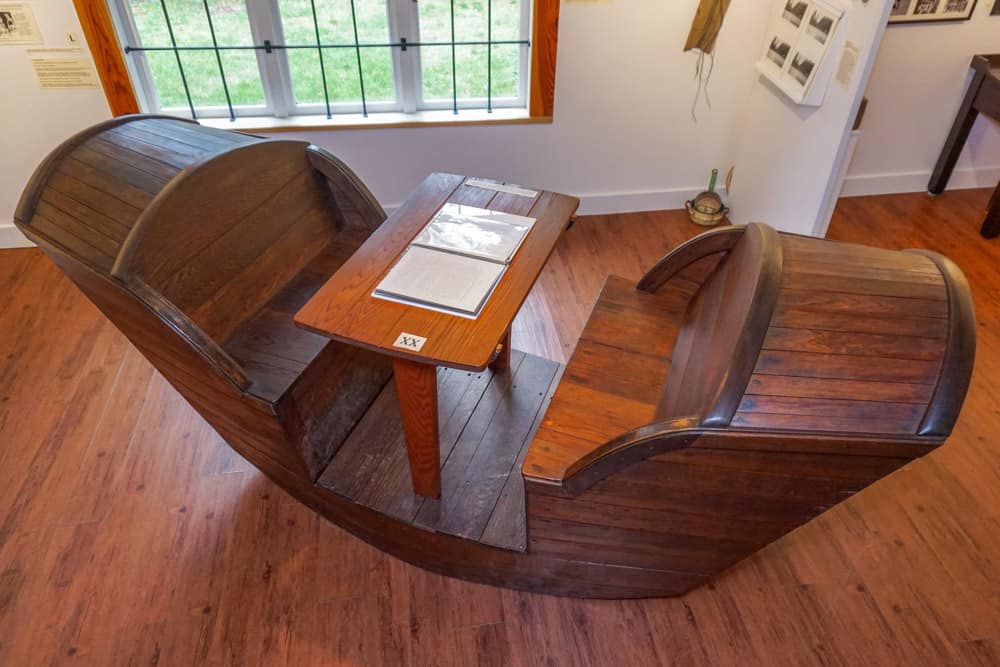I never met Doris Hope. I was born in 1998, and she passed away in 2000. However, during the summer of 2017 as the museum summer student, I have gotten to know her. “Hope’s Refuge,” her transcript of life in the Cove, stories from her friends, the “Refugees,” bring Doris to life.
Boats were central to Doris’s life. She was born in England, but at thirteen, she boarded a ship with her family and immigrated to Canada.
After a childhood in Vancouver, Doris’s life took another marked turn, and once again, it involved a boat. She met Norman Hope.
He and his brothers owned a 37 foot sailboat, “their pride and joy,” according to Doris. She was invited for a weekend trip aboard the boat, along with her current boyfriend. After the trip, that boyfriend didn’t last long; Doris and Norman were married a year later.
Norman suggested that they hire a boat for their honeymoon. Doris recalls going to see the boat, which only had two narrow bunks, and sleeping on the floor between them. The boat had more problems than sleeping arrangements. The engine began to fail, just as a mighty storm whipped up. As Doris remembers, “Norm checked out the engine, and decided it was kaput,” so they were forced to seek refuge on an old judges homestead.
Soon, Doris and Norm would provide refuge of their own for many boaters. Broke, and with nothing to lose, the young couple bought the Refuge Cove Store, along with Norm’s brother. The year was 1945.

In the cove, boats were a part of daily life. Perhaps the busiest time was when the Union Steamship would come in with stock for the store. It would often come in at 2 a.m., according to Doris, so she and Norm would roll out of bed and go carry all the freight up the ramp. Then they’d catch a few hours sleep before opening the store to crowds of tourists waiting for fresh produce. Doris said they were so anxious to get it that they’d help unpack new shipments!
Everyone who came to Refuge came by boat. People came for the location – Desolation Sound – and stayed for the Hope’s hospitality. “We arrived at Refuge Cove to buy 5 lbs of potatoes and we didn’t leave for two weeks,” said summer visitor Pat Miller.
In the early 1970s, the Gibbons family came to Refuge. Norm Gibbons had spent teenage summers in Refuge, working for the Hopes, and now he was back with his wife, Denise, and their children Lisa and Michael. They were on their way to sailing around the world, but they stayed in Refuge for eight months (until they ran out of money). They returned to Vancouver, and work, but by this time the land around the Cove was for sale, and an idea was cooking. Could young families own waterfront land? Co-ops were the trend on the west coast in the early 70s, and word spread that the Gibbons were forming a Co-op to buy Refuge Cove.
But (the other) Norm and Doris’s reign at Refuge didn’t end. They offered endless advice – how to fix a motor, skin a deer, and Doris’s household hints.
Into her old age, Doris stayed on the water. Co-op members recall her rowing out to rocky islets with her TV to get better reception.
Today, she is remembered by Refuge Cove residents as they wander around the Museum exhibit. They tell me their stories of her, and they smile when they see the teal paint on the back wall – the exact colour she painted her house. At the museum, you can even hear her cigarette-dry voice in an interview on the TV, and you can read the book that Irene Mauldin typed out, based on Doris’s narration. Read about her in the Coastal Kitchen cookbook, and in Judith William’s Dynamite Stories, available at the museum.


